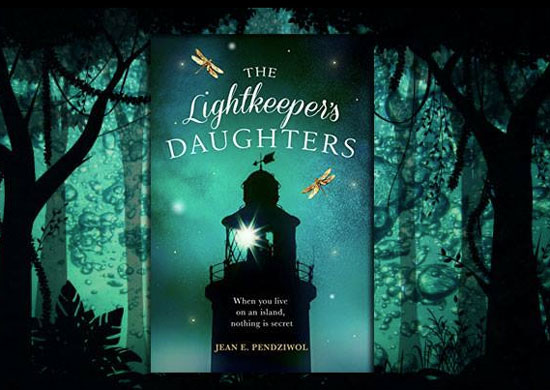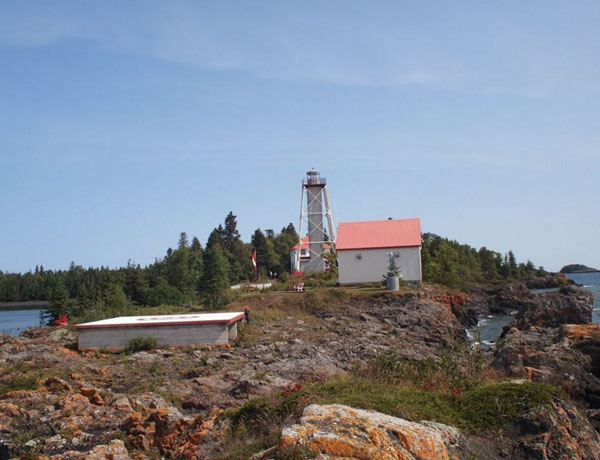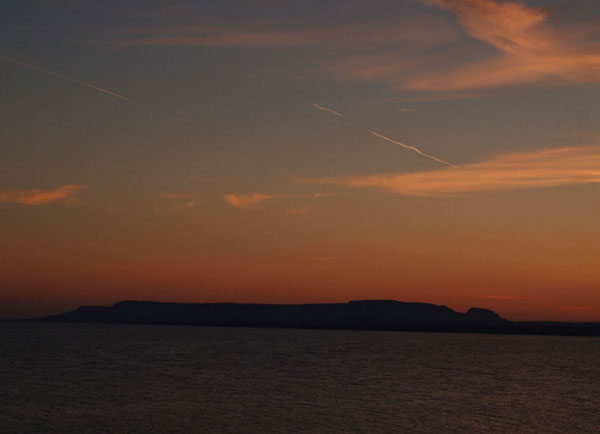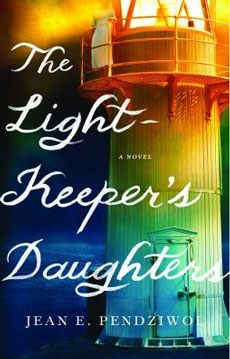The Lightkeeper’s Daughters – Lake Superior – Canada – Jean E. Pendziwol
Off to Canada today and the Great Lakes, Ontario and a very special story inspired by the past….
Jean E. Pendziwol shines the light on a very special read…
BookTrail the novel here
Shining a light on a true story…
The story of The Lightkeeper’s Daughters has its roots in setting, and while it is a work of fiction, it was also inspired by the men and women who served on the Great Lakes, tending the light and fog stations during the early part of the 20th century. I visited Porphyry Island as a child in the 1970’s and met the lightkeepers stationed there. I always thought it would be a romantic place to live. When I imagined what it might be like for a young girl growing up on the island, the characters of Elizabeth and Emily began to evolve, their isolation bringing them closer together, Lake Superior shaping their lives.
When I began researching, I came across journals kept by one of Porphyry’s early tenders, Andrew Dick. Dick lived on the island year-round with his Indigenous wife and their ten children, and his journals, while from a time period earlier than when my story, provided a snapshot into life on the island.
I also remembered a story I heard as a teen about a boat that was found washed ashore on the Sibley Peninsula, where the landform known as the Sleeping Giant rests. The sails were torn. There was blood on the deck. And there was no one on board. I love a good mystery, and that story stayed with me to feed my creativity years later. It became the opening chapter of the novel.
BookTrail the novel here
Morgan evolved as I began to write. She is a complicated, multi-faceted character, searching, lonely, and in her own way, finding a way to survive. I loved watching the relationship develop between this feisty teen and the elderly Elizabeth. With almost 70 years between them, they still had so much in common.
But the story itself, the idea of taking a… ooops! Better not spoil anything.
Location…
BookTrail the novel here
To me, the location of The Lightkeeper’s Daughters is as much about character as it is about setting. Lake Superior moves in the lives of the Livingstone family, Porphyry Island provides both refuge and isolation, and the environment at once sustains them and threatens them.
I grew up sailing on Lake Superior, the largest freshwater lake in the world (by area). It is vast, temperamental and moody, capable of snapping at 730 foot freighter in two; a sea surrounded by a continent. Lake Superior is the furthest inland body of water in a transportation network that connects the centre of two countries – Canada and the US – to the world. It was long used by Indigenous people travelling by canoe, and then by colonists who brought ships as needed for the fur trade and then later other resources – grain, ore, timber. Today, connected by the Welland Canal to the Saint Lawrence Seaway, ocean-going freighters, known locally as “salties,” still navigate the shipping channels for about nine months of the year.
As a child, my weekends and summer vacations were spent aboard our 32-foot sailboat, exploring the coves and islands, experiencing the fog and storms. While I still get out on my father’s boat occasionally, I now sometimes explore the Lake, cautiously and respectfully, by kayak. In the winter, I like to escape to my father’s home on the shores of Superior where the Lake, trapped beneath a layer of ice, complains; cracking, even waking me at night with its groaning and roaring. It isn’t unusual to find it broken wide open a day or two later, chased by the wind, its frozen coat tossed ashore in jagged pieces. Even after weeks of temperatures in the minus twenty to thirty range, it seldom freezes over completely. It’s just that big.
On the research trail…
In addition to researching the history of lightkeeping and shipping on the Great Lakes, and experiencing the setting first hand, I was very fortunate to have been able to connect with several people who served at Porphyry Island as lightkeepers. Bob McKay regaled me with stories about the early days, taught me how the lamp was lit (the light on Porphyry was updated in the 1950’s and then automated in the 80’s), and shared aspects of his Indigenous heritage. He was descended from lightkeepers, his grandfather having served at several stations, and his family long involved in commercial fishing on Lake Superior.
I was also incredibly fortunate to have Frances McKay (Bob’s aunt) review my manuscript. Frances had served at Porphyry for decades with her husband Cliff who has head lightkeeper beginning in the 1950’s. When she read an early draft of my novel, she was in her mid-nineties and was able to fill in wonderful details about life on the island, her favourite places to escape to, her gardens, bears, and her fond memories of life as assistant keeper with Cliff. She was an absolute gift.
For Morgan’s character, I connected with a local artist collective called Die Active who were involved in creating a number of sanctioned street art murals. I watched them painting, asked questions about “writing” (graffiti) and learned a bit about their process. It also helped that I had a couple of teenagers living in my home at the time. (They made sure I got the language right!)
BookTrail the novel here
The message in the darkness…
While I didn’t set out with the intent to explore concepts of family and the meaning of identity, these themes naturally emerged on the page. I think it’s something we all ask ourselves at some point – who am I?
I think all good stories ask questions and leave us contemplating them, perhaps never settling on an answer. The Lightkeeper’s Daughters raises a few, including what would we do – what lengths would we go to – to protect someone we love.
Evoking setting
This is the easy part of my writing, especially when I’m describing a place I’ve been to, and I love using language to paint a scene. I put myself there, experiencing it so that I can pass the experience on to the reader, so that they, too, are drawn into the landscape, immersed in the environment. Storytelling for me is a sensory experience and I want to evoke sensation in the reader. I want them to feel something. Our senses are how we experience life, so it should be how we experience story.
Surprises on location…
I discovered that Porphyry was home to some unusual vegetation. For example, Devil’s Club is a plant typically found on the west coast of British Columbia, thousands of kilometers away. What is it doing on an island in the middle of Lake Superior? I found it so interesting, I decided to weave it into the story.












